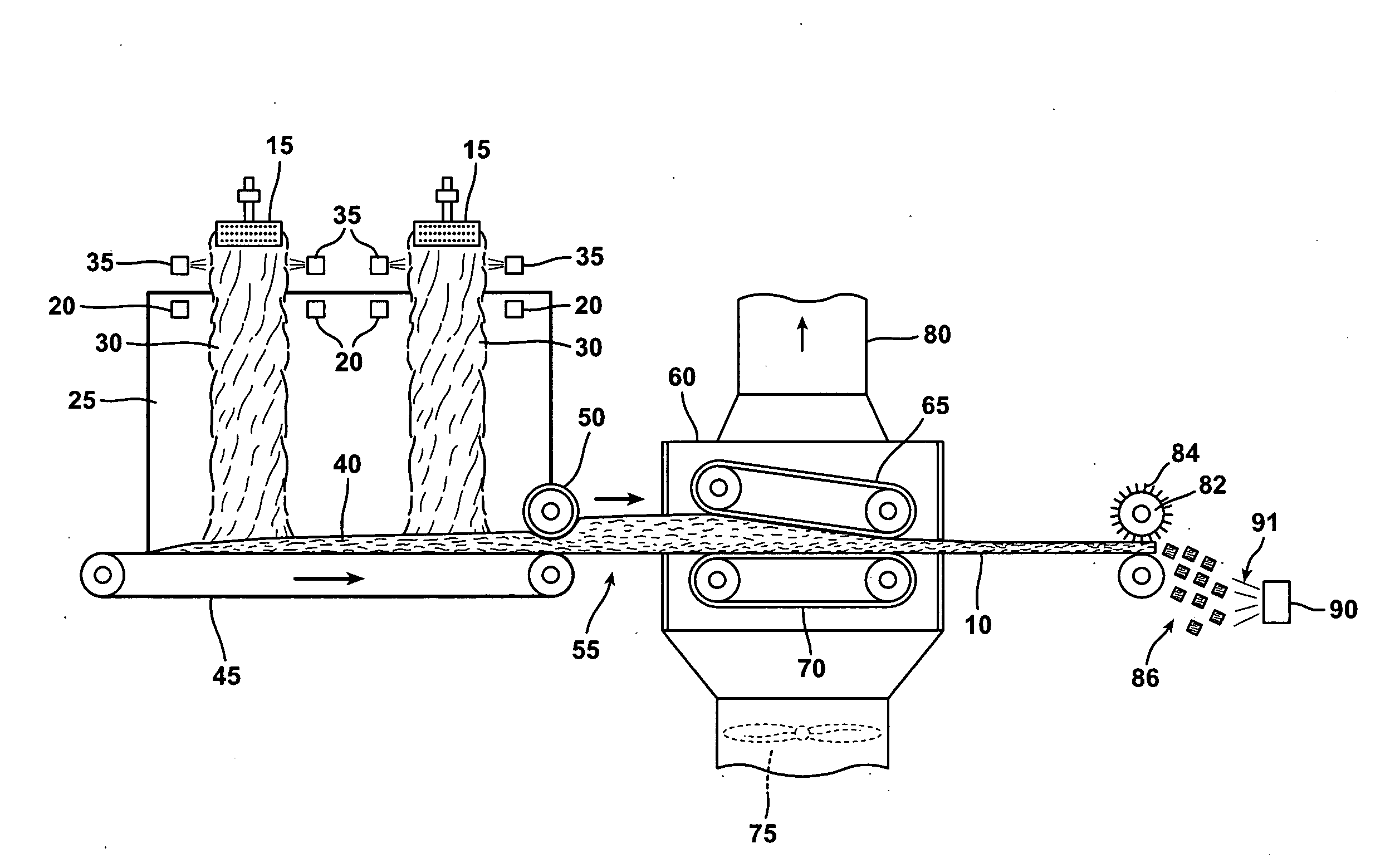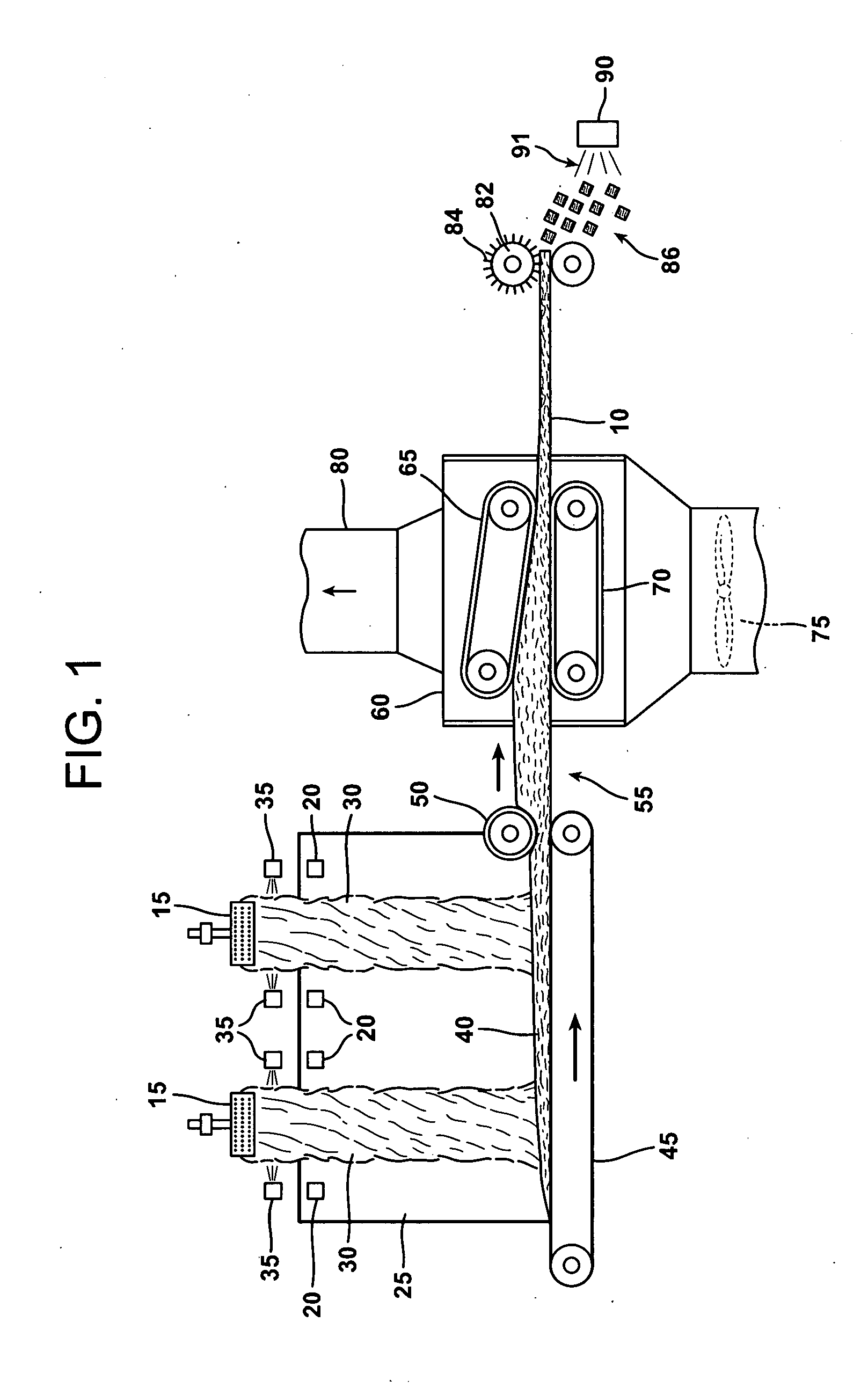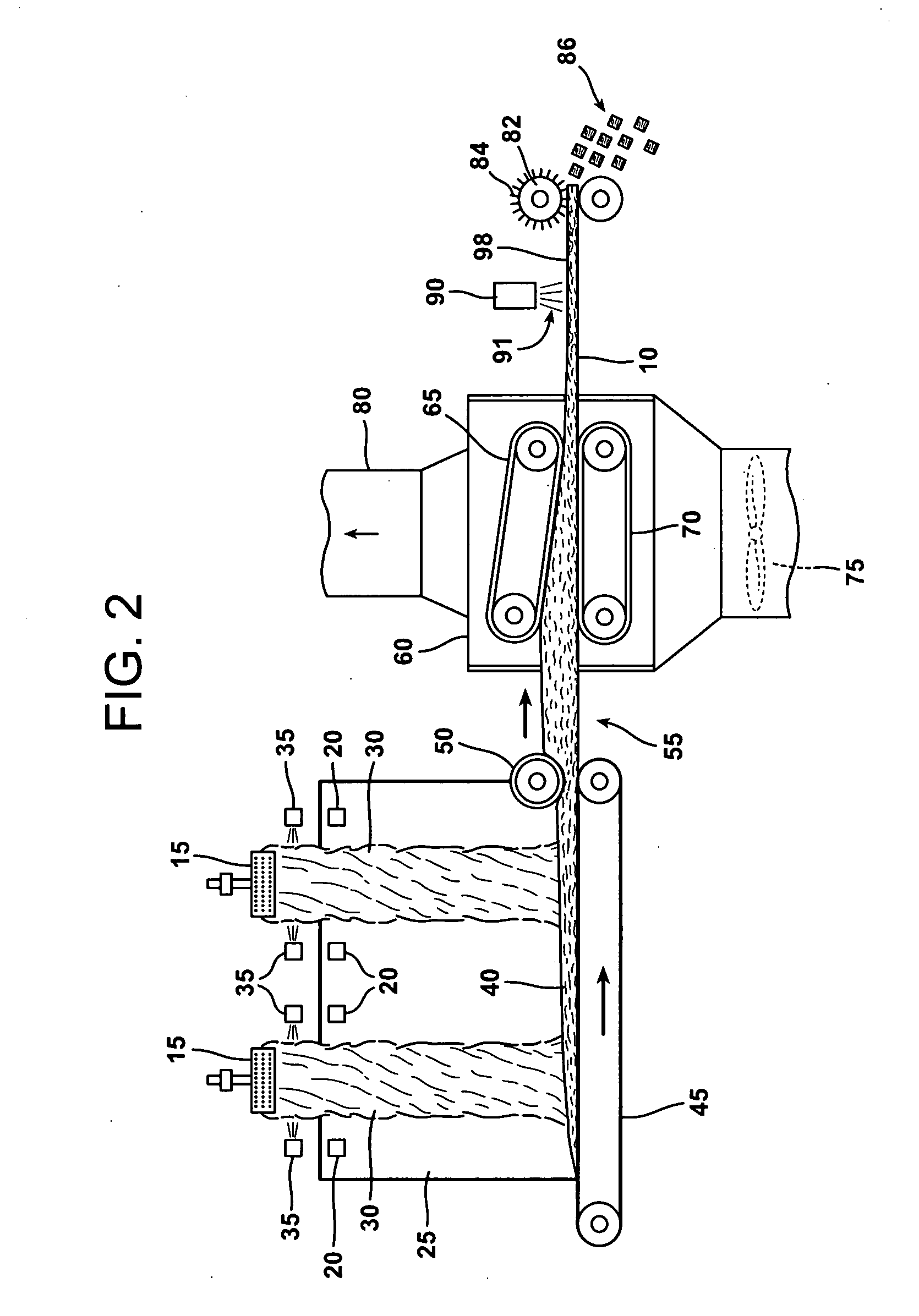Post addition of amine-based compounds to reduce formaldehyde emmission in insulation products
a technology of amine-based compounds and insulation products, which is applied in the field of fiberglass insulation, can solve the problems of non-uniform size and shape of small nodules, and achieve the effects of reducing formaldehyde emission into the atmosphere, improving worker safety, and reducing formaldehyde emission from insulation products
- Summary
- Abstract
- Description
- Claims
- Application Information
AI Technical Summary
Benefits of technology
Problems solved by technology
Method used
Image
Examples
examples
[0048]Cubed glass insulation nodules having a size of ½ of an inch per side and including 4.5% by weight of a formaldehyde binder were obtained for testing. Insulation nodules having no added urea (control), prilled urea, water, or a solution of urea in the amounts shown in Table 1 were placed into 5.75 inch diameter straight walled evaporation dishes. The urea solution was made by adding 50 grams of prilled urea and 50 grams of water in a container. The sample weights were recorded. Two 50 ml beakers filled with deionized water were placed on either side of the samples in desiccators. The desiccators were then closed and the time was recorded.
[0049]After 24 hours, the desiccators were opened and the beakers of water from each of the desiccators were removed and poured into 2 oz large mouth plastics bottles for formaldehyde emission testing 0.05 ml of 1000 ppm dodecyl trimethyl ammonium chloride in water (e.g., biocide) was added to each of the plastic bottles. The water samples wer...
PUM
| Property | Measurement | Unit |
|---|---|---|
| width | aaaaa | aaaaa |
| length | aaaaa | aaaaa |
| diameter | aaaaa | aaaaa |
Abstract
Description
Claims
Application Information
 Login to View More
Login to View More - R&D
- Intellectual Property
- Life Sciences
- Materials
- Tech Scout
- Unparalleled Data Quality
- Higher Quality Content
- 60% Fewer Hallucinations
Browse by: Latest US Patents, China's latest patents, Technical Efficacy Thesaurus, Application Domain, Technology Topic, Popular Technical Reports.
© 2025 PatSnap. All rights reserved.Legal|Privacy policy|Modern Slavery Act Transparency Statement|Sitemap|About US| Contact US: help@patsnap.com



